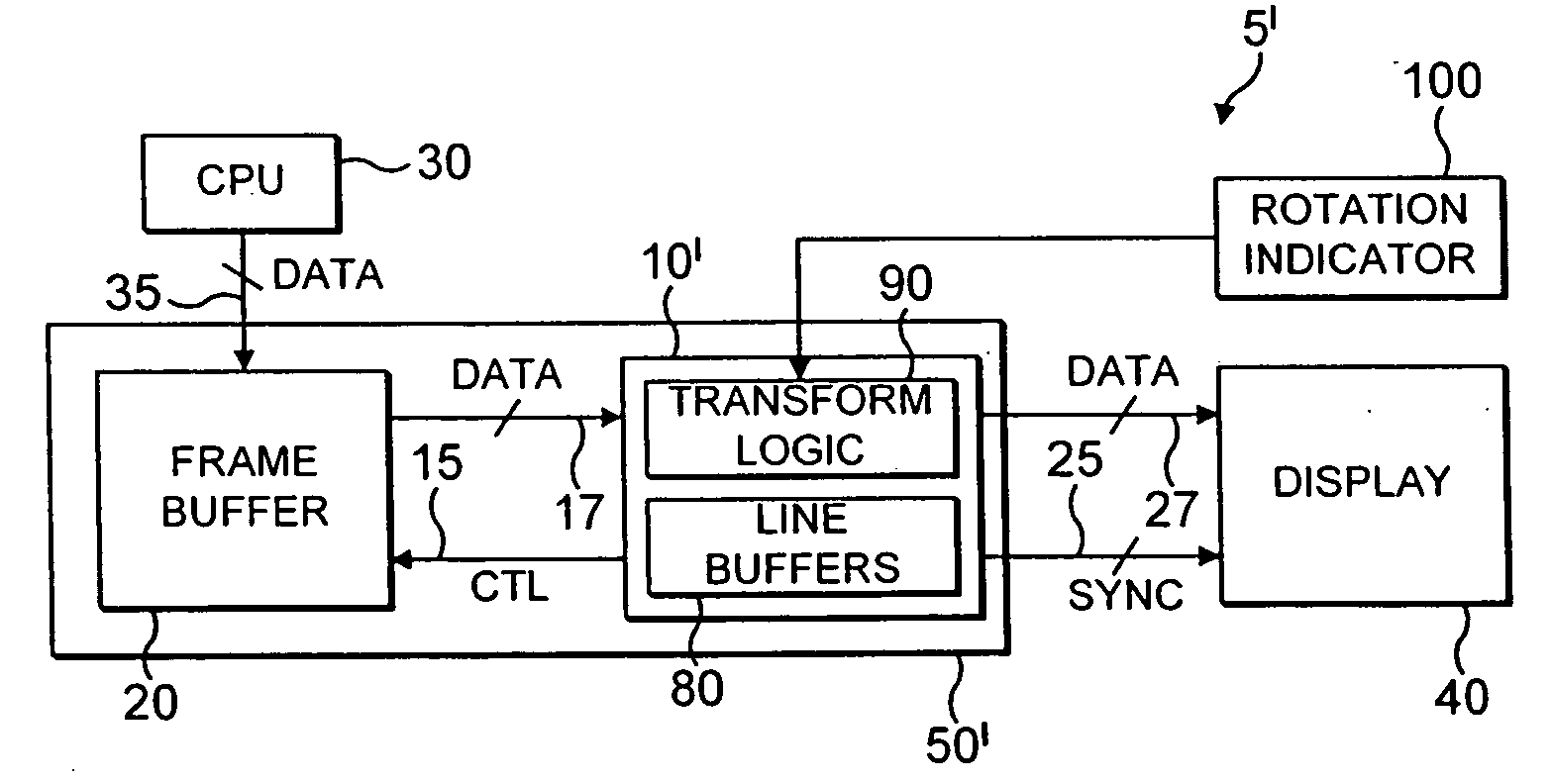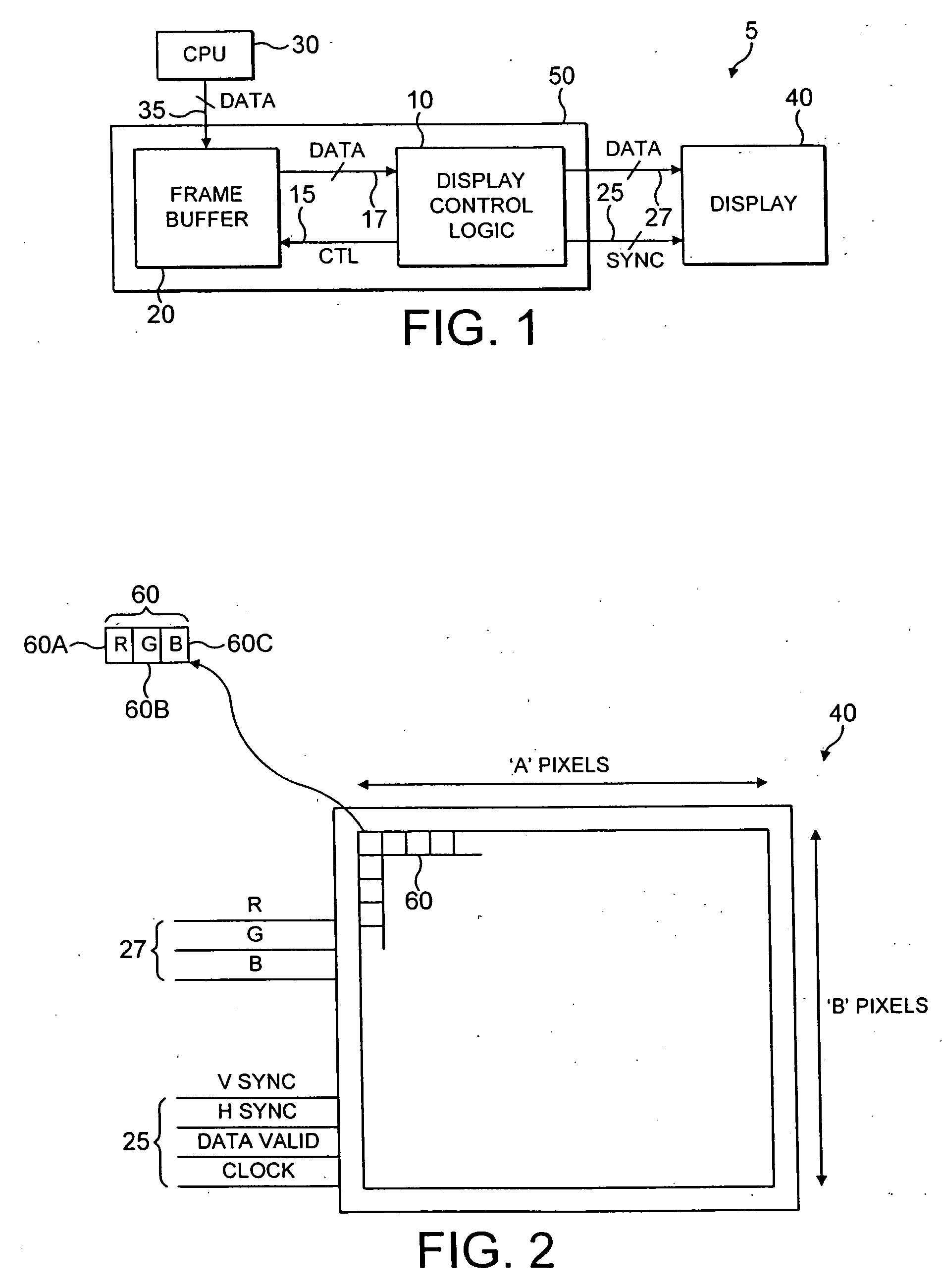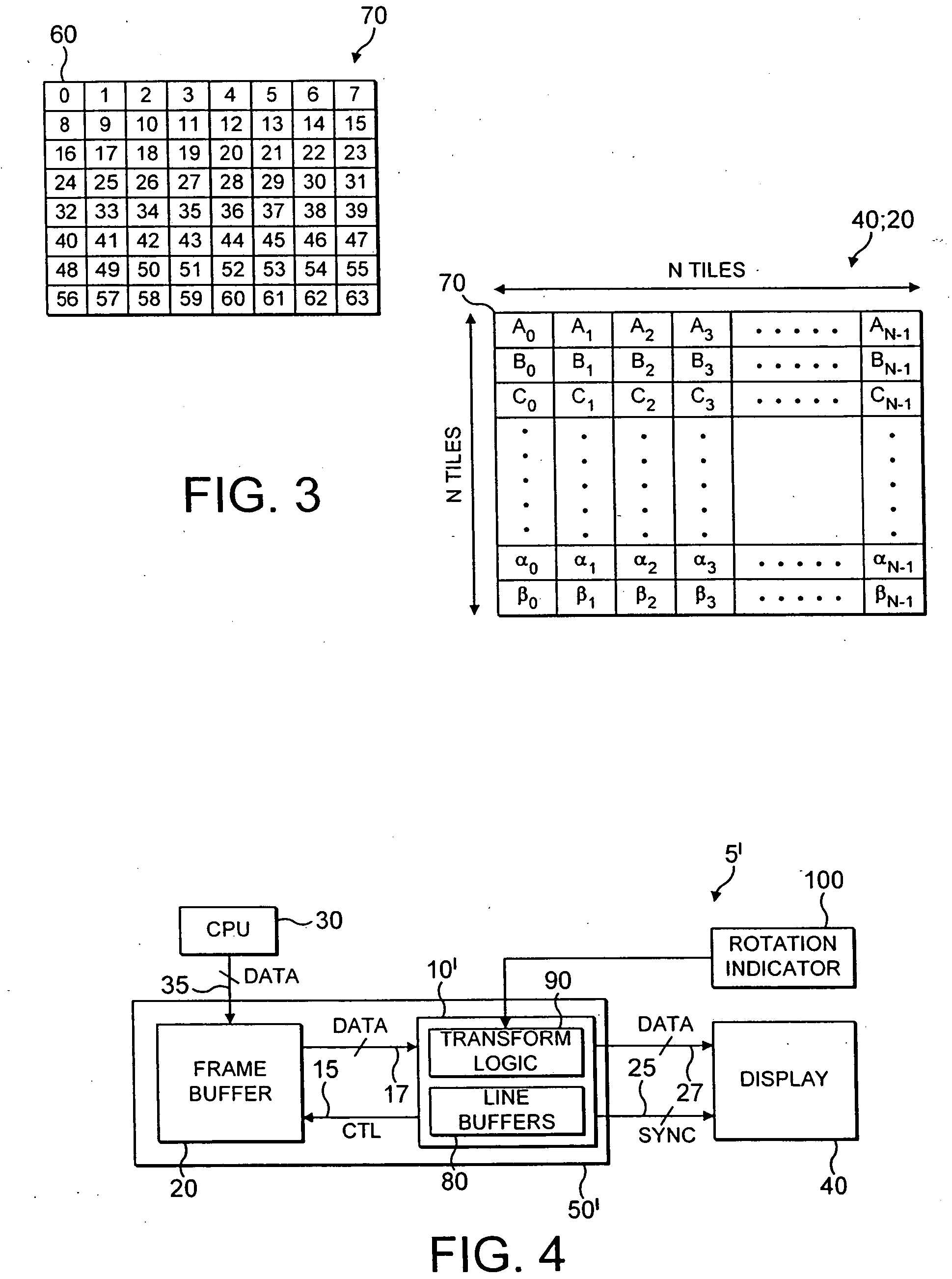Display controller
a display controller and controller technology, applied in the field of display controllers, can solve the problems of increasing the number of non-sequential accesses, inefficient approach, and inefficient when performing non-sequential access, and achieve the effect of access efficiency
- Summary
- Abstract
- Description
- Claims
- Application Information
AI Technical Summary
Benefits of technology
Problems solved by technology
Method used
Image
Examples
Embodiment Construction
[0058]FIG. 3 illustrates an arrangement of the display 40 using tiles. The display 40 comprises an array of pixels 60 as illustrated in FIG. 2.
[0059] The pixels 60 in the display 40 are arranged to form adjacent tiles 70. Each tile 70 comprises, for example, 8 pixels by 8 pixels and hence there are 64 pixels in each tile 70. For this example display 40 the pixels are arranged to form N tiles by N tiles.
[0060] The pixels 60 in the display 40 are numbered as illustrated in FIG. 3. Within each tile 70, the 64 pixels are numbered consecutively starting with the top leftmost pixel in that tile 70 with pixel numbers increasing along the line of pixels until the last pixel in that line is reached. The next pixel comprises the leftmost pixel in the next line down with numbers increasing along that line of pixels until the last pixel in that line is reached and so on.
[0061] The tiles 70 are ordered in a similar manner, i.e. starting with the top leftmost tile A0 and then numbering increas...
PUM
 Login to View More
Login to View More Abstract
Description
Claims
Application Information
 Login to View More
Login to View More - R&D
- Intellectual Property
- Life Sciences
- Materials
- Tech Scout
- Unparalleled Data Quality
- Higher Quality Content
- 60% Fewer Hallucinations
Browse by: Latest US Patents, China's latest patents, Technical Efficacy Thesaurus, Application Domain, Technology Topic, Popular Technical Reports.
© 2025 PatSnap. All rights reserved.Legal|Privacy policy|Modern Slavery Act Transparency Statement|Sitemap|About US| Contact US: help@patsnap.com



